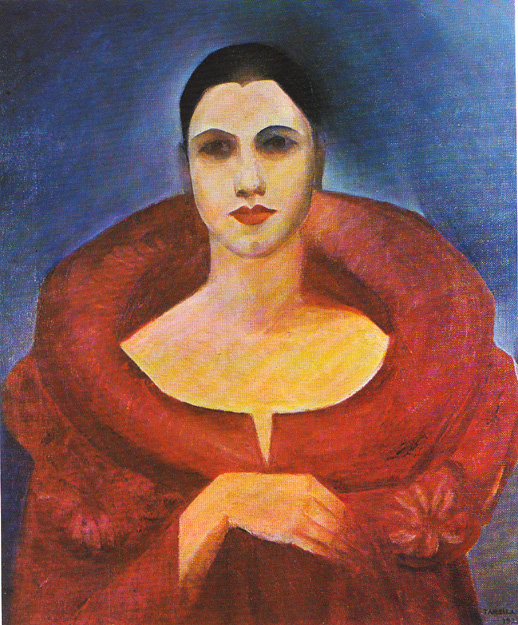Source: Museu Nacional de Belas Artes, Rio de Janeiro, Brazil. Colorama Editora Artes Gráficas Limitada, n.d., p. 115
Painting: Tarsila do Amaral (1890-1973), Self-portrait (1923).
Comment: She was one of the most prominent artists of the Brazilian modernista movement. She began painting in 1917, and then she went to Paris in 1920 where she met Fernand Léger. After 1922, she integrated Cubist techniques into her works. Returning to Brazil in 1922, she joined four other artists in the so-called Grupo dos Cinco (Group of Five), which is the vanguard of the modernista movement in Brazil. From 1926, she becomes associated with the Movimento Pau-Brasil and Moviemento Antropofágico (Poor Brazil Movement and Cannibal Movement). The idea behind the latter movement was that Brazilian artists should become acquainted with (i.e., devour, eat) modern European aesthetic movements, but to do so with Brazilian tastes and stomach (i.e., identity, character). In 1931, she visited the Soviet Union, which influenced her to integrate social commentary into her art.


